- Home
- slideshows
- Why so boring? Maharashtra state assembly elections 2019
Why so boring? Maharashtra state assembly elections 2019
1990: The election that shaped the next 25 years

1995: The first election in the state after the Mumbai riots
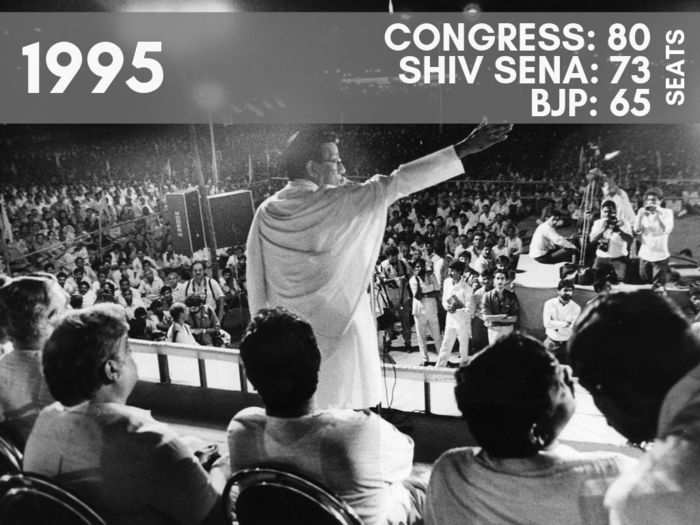
Shiv Sena: 73
BJP: 65
Congress: 80
The infamous riots in Mumbai after the demolition of the Babri Masjid and the subsequent blasts led to a tense and polarised environment ahead of the 1995 elections.
Shiv Sena, which played a crucial role in the ‘Hindu retaliation’ to the blasts in the city, went on to expand its reach beyond the state capital and as far as the Konkan regions.
Manohar Joshi was placed as the Chief Minister by the Sena supremo Thackeray and Gopinath Munde from the BJP became the deputy chief minister. The first thing the government did was to change the name of India’s financial capital to Mumbai from its colonial name Bombay. The second decision was to scrap the Justice Srikishna Commission that was probing the Mumbai riots.
1999: The birth of the Nationalist Congress Party (NCP)
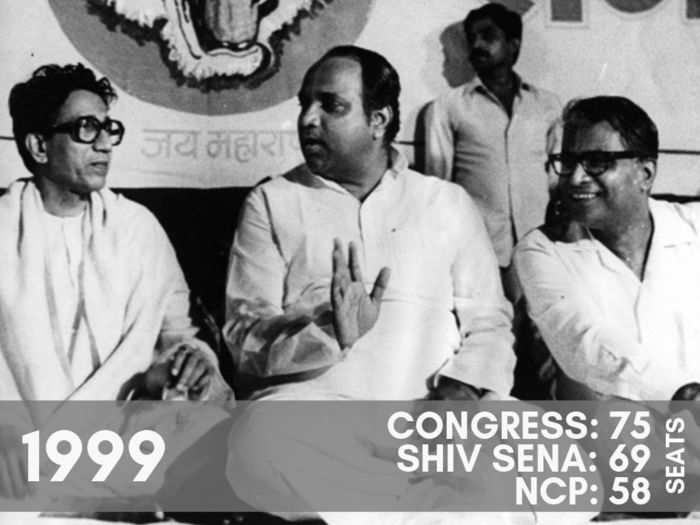
Congress: 75
Shiv Sena: 69
NCP: 58
As Congress’ fortunes declined in the state, Sharad Pawar -- he had been the state’s Chief Minister thrice by then-- broke away and formed the Nationalist Congress Party (NCP) protesting the appointment of an Italian origin woman, Sonia Gandhi, as the leader of the Congress. The revolt from a tall leader like Pawar and the birth of a new party under him turned the heat on in 1999.
The split worked in taking power away from the Sena-BJP combine and the Congress and the NCP came together with a post poll alliance.
This election was exciting also because it happened simultaneously with the Parliamentary polls in which the BJP-led coalition, which included the Shiv Sena, emerged as the frontrunner. Atal Behari Vajpayee was sworn in as the Prime Minister while Vilasrao Deshmukh became the Chief Minister in Maharashtra.
2004: Bal Thackeray’s successors gain limelight
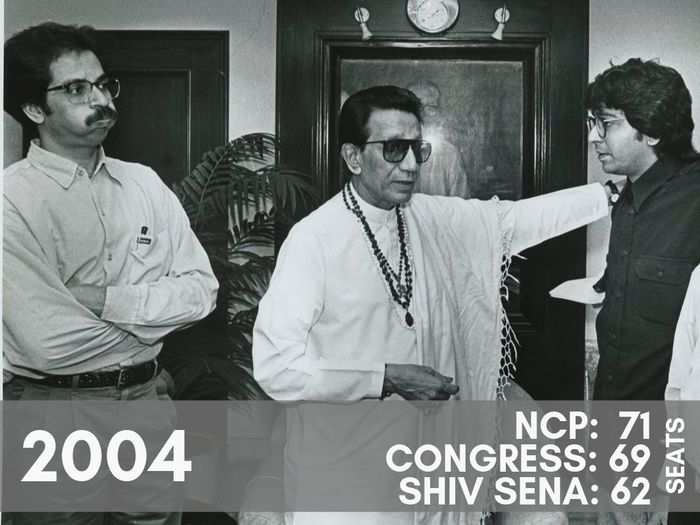
NCP: 71
Congress: 69
Shiv Sena: 62
By 2004, Bal Thackeray had hit a ripe old age of 78 and the next generation was ready to take the mantle. There were two potential candidates-- his son Uddhav and his firebrand nephew Raj. The Sena patriarch went with his son although there were no visible cracks within.
Uddhav’s ‘Mee Mumbaikar’ drive and Raj’s campaign against migrant workers that at times turned violent kept the temperature well and truly up ahead of the elections.
The Sena-BJP alliance lost the election both at the Centre and the state in 2004. Vilasrao Deshmukh was once again appointed Chief Minister and he remained so until 2008.
2009: The fiery Raj Thackeray’s first election on his own
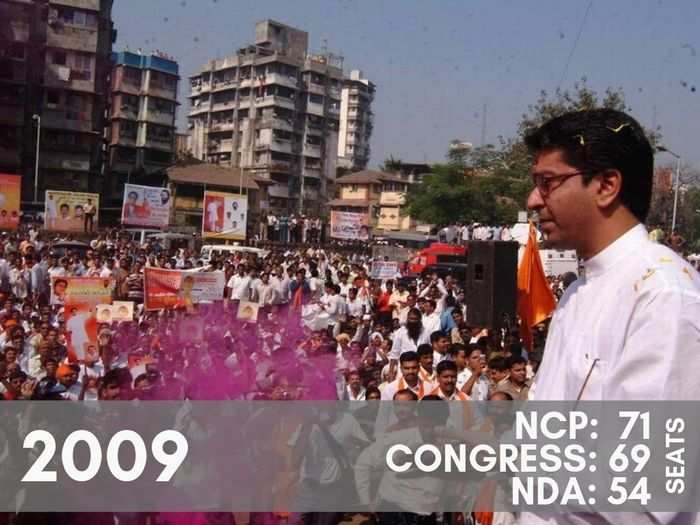
NCP: 71
Congress: 69
NDA: 54
The NDA lost the state in 2004 and by 2006, the Sena had seen a split. The forsaken Raj Thackeray decided to start his own party, the Maharashtra Navnirman Sena (MNS), and 2009 state assembly elections were his first test.
He kept the heat up on the incumbents as well as other challengers with his fiery and provocative speeches targeting north Indian immigrants in Mumbai.
He won 13 seats and had an impressive 11% vote share for a debutante in electoral politics, but he had only eaten into Sena’s pie. The Congress-NCP coalition prevailed and Ashok Chavan became the Chief Minister.
2014: The year of Narendra Modi
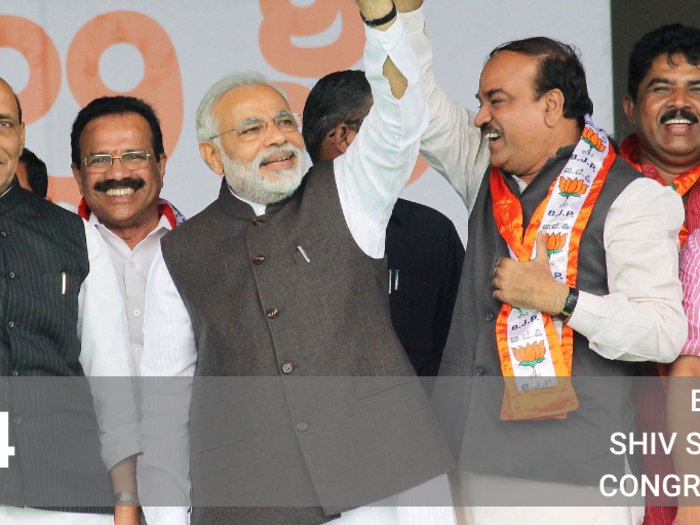
BJP: 123
Shiv Sena: 63
Congress: 42
A series of corruption charges both at the state and Central level had eroded a lot of the goodwill from Congress and its friends including the NCP. At the same time, Narendra Modi had stormed to power at the Centre with the strongest mandate in 30 years.
Modi used his star power to campaign heavily for the NDA in the state and the state elections in Maharashtra later that year mirrored the results in the Centre.
The BJP bagged 123 seats and the Sena added 63 to the NDA’s count. This was the first time since 1990 that a side had more than 100 seats in the state Assembly.
2019: Taken for granted?
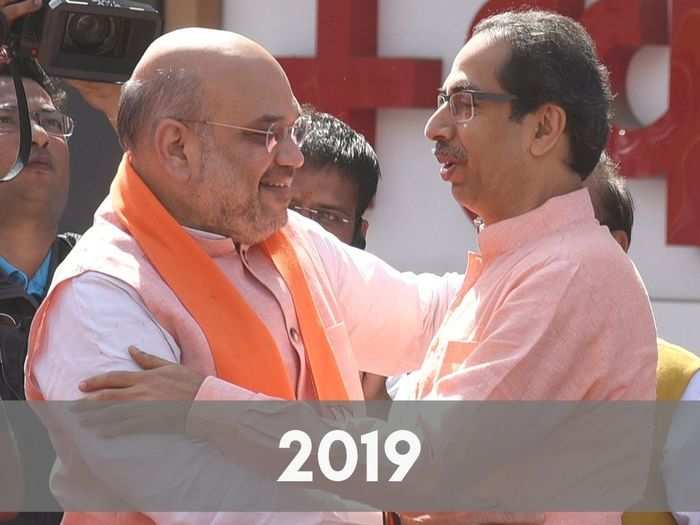
The consensus for 2019 Maharashtra state elections seems to be a decisive victory for the NDA and a depleted opposition seems to be dealing with existential questions.
It is not that there is no action on the ground. A state that is constantly battling either a drought or a deluge in different regions, a state that is infamous for a high number of farmer suicides, the brazen income inequality that is visible from nearly every window in the state capital, and the creaky infrastructure that kills more people every year in the financial capital, can never ignore an opportunity to hold the elected representatives accountable.
The broader economic slowdown in India has had a severe impact in Maharashtra particularly in its farmlands as well as industrial belts like Pune, which is home to many car makers and automobile parts makers who have laid off thousands of employees citing lack of demand.
The recent citizens’ outburst in Mumbai against the clearance of trees in Aarey Colony in suburban Mumbai met with a backlash from an equally motivated set of people who wanted a metro shed sooner than later.
This is also the first assembly election after the historic protest march by farmers in 2018 when nearly 50,000 people walked over 150 kilometres, from Nashik to Mumbai, demanding rights over the land they till.
However, the seemingly demoralised opposition has not seemed to capitalise on the opportunities to battle the institutionalised election machinery of the BJP.
Popular Right Now
Popular Keywords
Advertisement